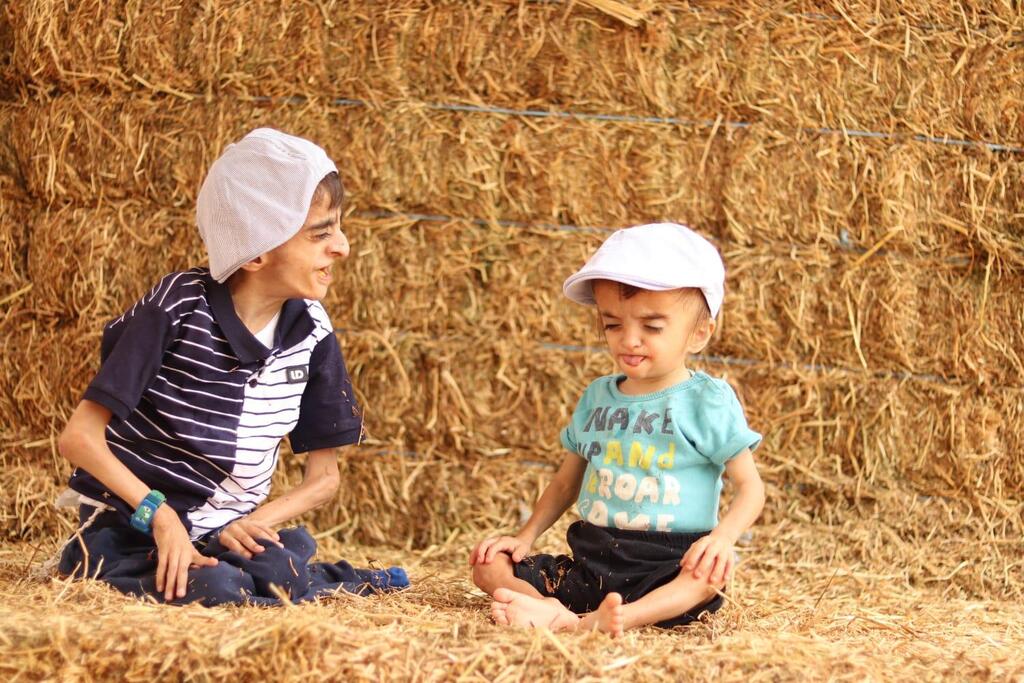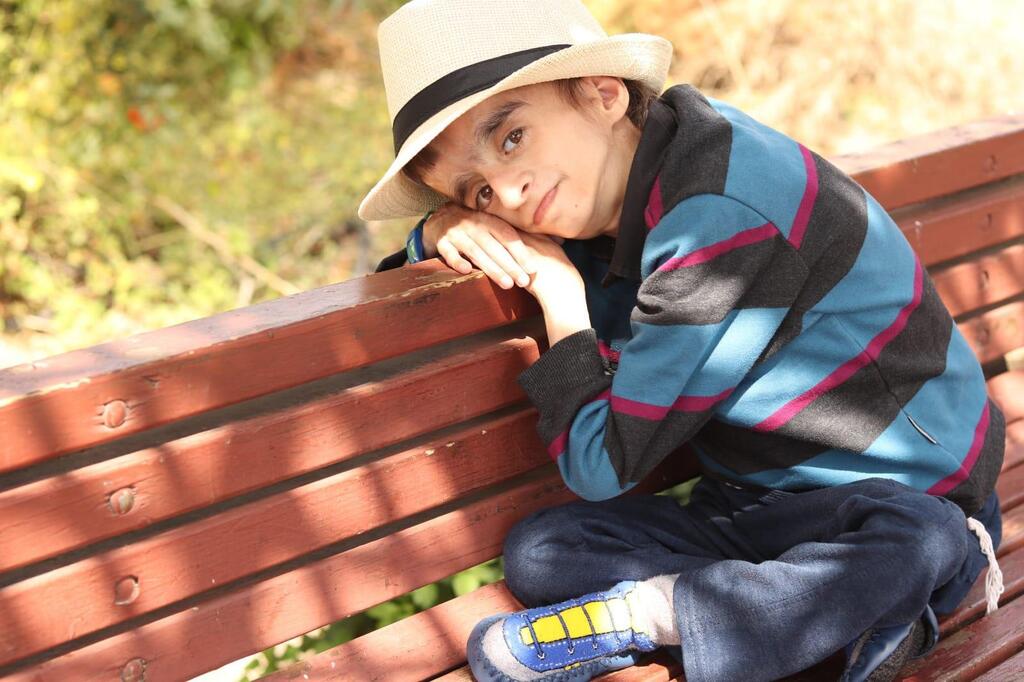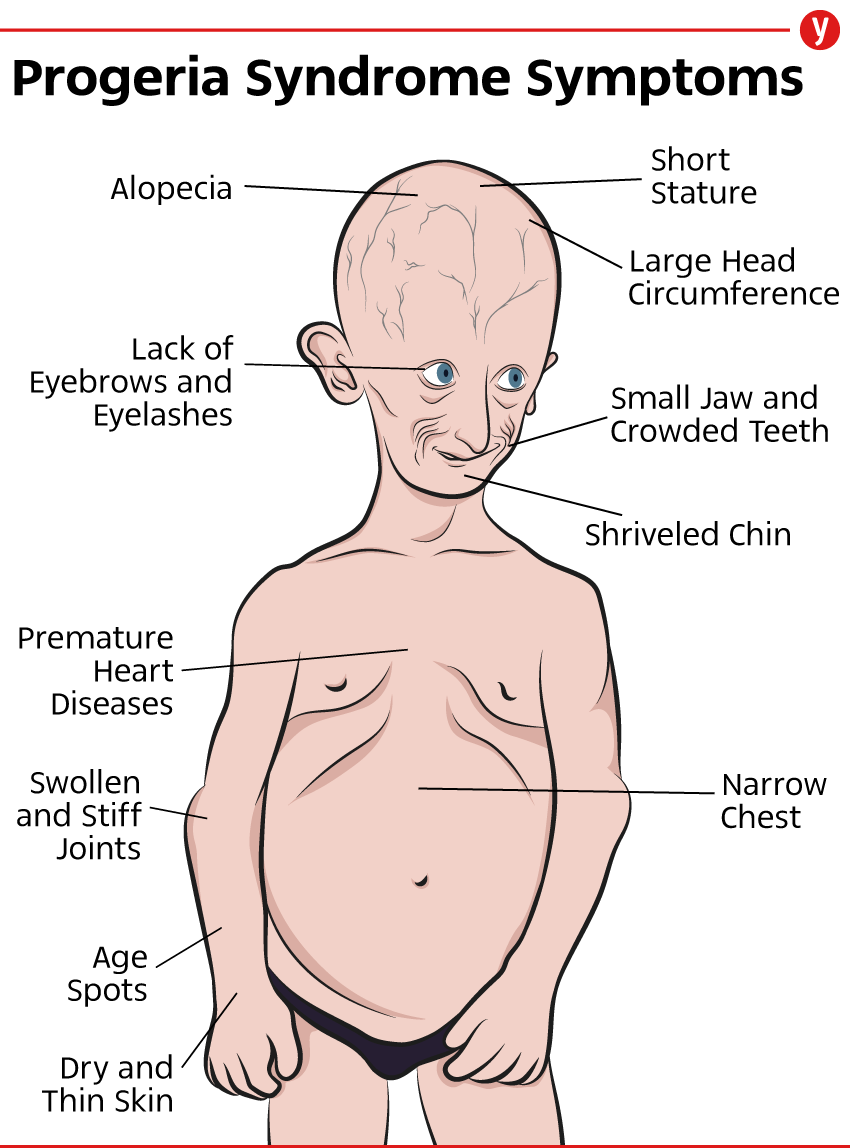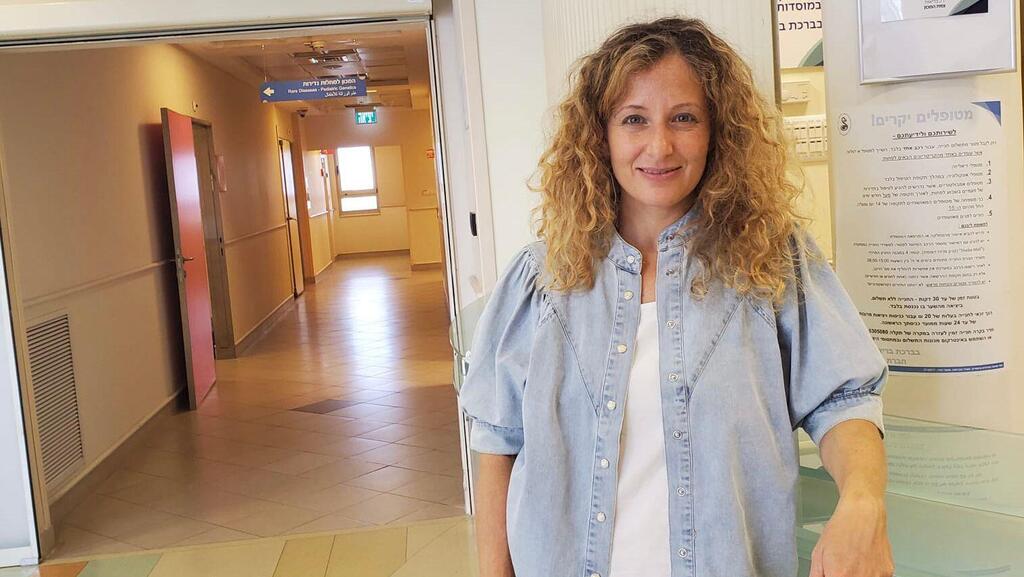Getting your Trinity Audio player ready...
Sara Orshalim, a 43-year-old mother from Elad, has five children. Her second son, 21-year-old Refael Nissim, and her youngest, five-year-old Yosef Ariel, live with a rare illness known as progeria syndrome.
More stories:
"It's not easy, my life is very limited," she tells Ynet, "I haven't worked for years. I'm constantly occupied with hospital visits and other issues that take up my entire day."
"We have been through many difficult times. Even today, my eldest son suffers from recurring pneumonia. He started feeding through a tube, he doesn't walk and speaks very weakly, but he's happy," she says.
"He makes everyone want to be happy. If he sees his siblings fighting, he'll ask them to make up. He doesn't want the house to be disorganized. My youngest, aside from the syndrome, is also on the autism spectrum, so it's different for him."
You also have to deal with the syndrome's social aspect.
"I'd like people to know more about the syndrome so that they accept people who are different from them. I'm not ashamed of the boys. When another child comes and asks me why my son's so thin, or why he looks like that, I simply explain that he was created this way and that everyone is born with a different condition. But emotionally, it's very hard."
Your eldest son is currently the oldest living person with this syndrome.
"That's right. When he was born, people told me 'Don't get attached to him,' they told me he wouldn't make it to five. It's very hard to start taking care of a child when you know that you'll soon part with him."
"At night, I'd get into bed and think where I'd bury him and what I'll say. I said to myself that I wanted to be able to tell him I did everything I could for him," she adds.
"This was my love-filled wish for him. Even now, when he goes through tough times sometimes, I often think that it'll be over soon."
No doctor ever imagined he'd get to be 21 years old.
"Not one. I'm also happy that he reached this age."
To what extent is he aware of his condition?
"I don't know how much he understands. Now, with the feeding tube connected, I explained to him that if he drinks from his mouth, he can die, and I told him he has a choice because he didn't want a hole in his stomach.
"I said we'll do what he decides, and then he said, 'I want the surgery.'"
"I said we'll do what he decides, and then he said, 'I want the surgery.' But it's not easy. Coping emotionally is far harder than doing so physically. I'm very optimistic, I'm a happy woman, and I try not to show my hardship too much. I have three more healthy children at home."
How do they cope with this situation?
"They love him. When I gave birth, I never dreamed that 11 years later, I'd deliver another child suffering from the syndrome. Everyone at home supported me and told me they'll help me."
Everyone says he's the most precious person in the house. He's a happy and optimistic child. He's also very funny. It wasn't easy with the first one, but now I receive a lot of support and there's also more awareness of the syndrome than before."
Less than 50 children worldwide are recognized with progeria syndrome. "I think part of their survival is due to Sarah's dedicated care, determination, and devotion. These children are treated amazingly," says geneticist Dr. Odelia Horin, at Sheba Medical Center.
"When talking about premature aging, a number of diseases are involved. Recently, a baby was born at Rambam Health Care Campus with a similar rare syndrome called Hutchinson-Gilford Progeria. Neither of them can be detected in regular genetic tests," she explains.
"It's true that in Sarah's case, during her second pregnancy, there were signs in the ultrasound that could have allowed us to identify and suspect that the child would have the same syndrome, but under normal circumstances, they can only be detected using advanced sequencing tests that aren't part of routine testing, and most couples do not undergo them."
It took many years to identify the gene that causes Sarah's children's disease. Once we know the gene, we can offer a prenatal and preimplantation diagnosis. But if we can't identify the genetic cause, with several diseases today still unknown, we can't do that.
Progeria syndrome
Although progeria syndrome is extremely rare, occurring in approximately one in four million births worldwide, it gained public awareness, in part due to its portrayal in the movie "The Curious Case of Benjamin Button" starring Brad Pitt.
Dr. Horin explains that the syndrome is characterized by children who usually appear normal at birth, and their parents seek medical help due to feeding difficulties and weight gain issues.
One of the prominent features of children with the syndrome is a large head circumference, particularly in relation to their small body, lack of subcutaneous fat, alopecia, unique nail structure, and skin rash.
These symptoms make children resemble the elderly. As the disease progresses, the children develop accelerated aging processes in various tissues, with hearing loss and arteriosclerosis.
"The life expectancy for children with the syndrome is low, with an average of 14.5 years."
"The baby born at Rambam Health Care Campus was diagnosed shortly after birth, following a unique skin rash characteristic of the syndrome, the made doctors' suspicions."
"The life expectancy for children with the syndrome is low, with an average of 14.5 years, due to complications of arteriosclerosis, including cardiac or cerebral disease. There are reports of longer life expectancies around the world, and we hope advances in medicine will help prolong patient's life expectancy."
Unseen in routine testing
Dr. Horen and Dr. Shlomit Eisenberg-Barzilai, clinical geneticists at Sheba, explain: Progeria syndrome is caused by changes in the LMNA gene, one of the approximately 22,000 genes in the body.
Each gene exists in two copies, one inherited from the mother and one from the father. The syndrome is autosomal dominant, meaning that a change in one copy of the gene is sufficient to develop the disease.
In most cases, the syndrome is not inherited, and the parents carry two normal copies of the LMNA gene, so the genetic change occurs for the first time in the fetus).
Therefore, genetic screening tests to detect carriers of autosomal recessive diseases recommended for all couples in Israel will not detect changes in this gene, and the only way to detect these changes in the gene is through some sequencing tests.
Changes in the LMNA gene can cause a number of diseases, with a wide range of clinical manifestations, depending on where change happens in the gene's coding sequence.
The common feature of the leading symptoms of premature aging happens due to impairment in the processing of gene's protein encoding, leading to the accumulation of defective protein in various tissues called progerin. Accumulation of progerin leads to damage to various tissues and accelerates aging.
How is the syndrome treated?
Lonafarnib (Zokinvy) is a drug that reduces the accumulation of progerin in various tissues and slows down the progression of the disease. Additionally, there are studies exploring genetic editing technologies (CRISPR) and technologies based on RNA molecules that affect transcription (antisense oligonucleotides) as a possible treatment.
Another therapeutic option under advanced research is a molecule that enhances the degradation rate of toxic proteins.
"This syndrome is one of the thousands of rare diseases existing in Israel, and raising awareness of rare diseases in general, as well as the difficulties and needs of the families of these patients, is a unique opportunity," says Dr. Horen.
"This disease, and other rare diseases, gives us an opportunity to better understand biological processes in the human body and develop drugs that can benefit both patient and humankind as a whole."






